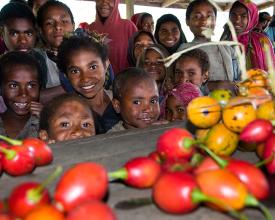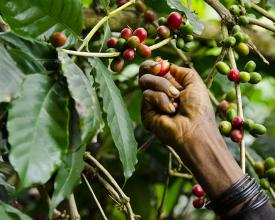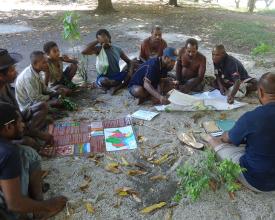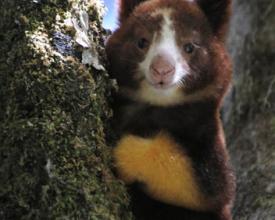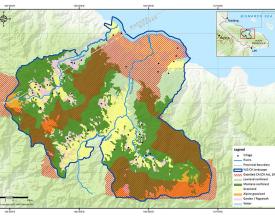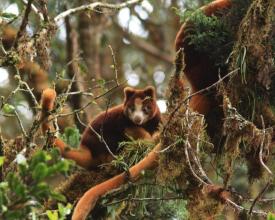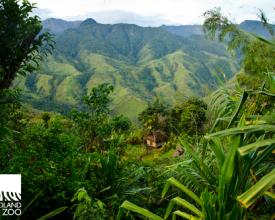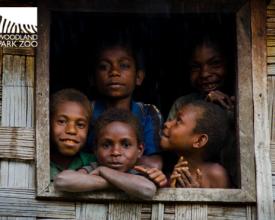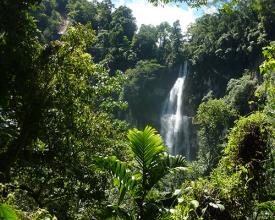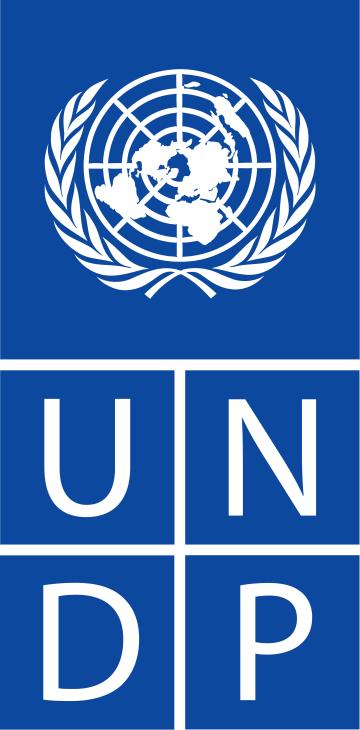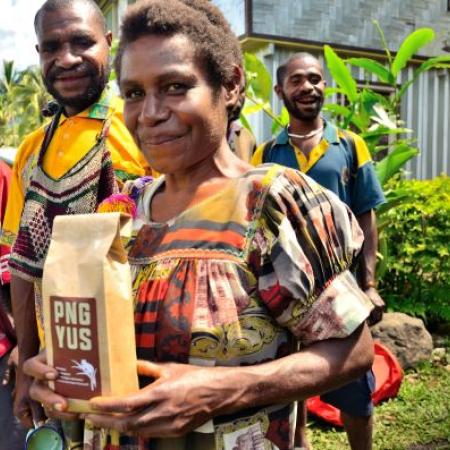
Tree Kangaroo Conservation Program (TKCP): A Successful Initiative to Finance Conservation & Community Well-Being in Papua New Guinea
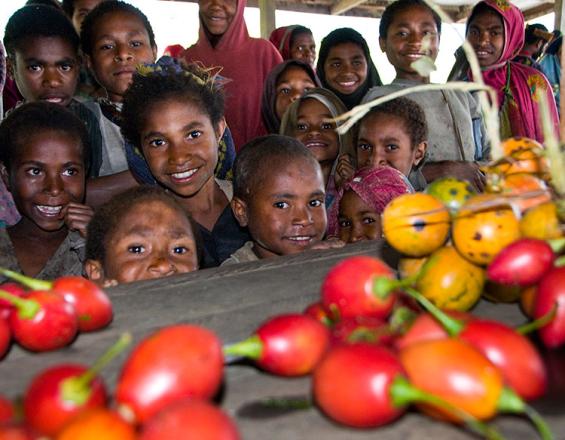
The Tree Kangaroo Conservation Program (TKCP) began in 1996 as a conservation research study to determine the status of the endangered Matschie’s tree kangaroo in PNG’s Huon Peninsula. Working with local communities and the PNG government, TKCP evolved to help establish the Ypono, Uruwa, and Som (YUS) Conservation Area in 2009 to protect habitat for a wide range of threatened species and was instrumental in establishing a conservation endowment that annually contributes to the funding needed for YUS management and protection in perpetuity. TKCP works in unique ways with communities to address their need for sustainable livelihoods, access to health, education and skills training. Through an innovative partnership with Caffé Vita to market YUS coffee, TKCP has helped to improve the standard of living for the more than 12,000 people in 50 villages throughout YUS. TKCP is now working with lowland farmers to develop a similar program for the sale of premium cocoa.
Context
Challenges addressed
Environmental – This solution addresses the challenge of working in a remote and difficult to access area of PNG (Huon Peninsula), rich in biodiversity, but facing the increasing pressure of subsistence needs from a growing population.
Social – This solution addresses the fact that 90% of land in PNG is owned by indigenous people, resulting in a need for local landowners to come together to protect their forests and their livelihoods.
Economic – This solution addresses the economic challenges faced by communities in the remote YUS Conservation Area that have limited economic opportunities and depend upon the land to meet their needs.
Location
Process
Summary of the process
Wildlife conservation and protected area management, supporting community livelihoods, and sustainable financing for the YUS Conservation Area are three building blocks that work in tandem to ensure the sustainable health and prosperity for the people and wildlife living in the YUS landscape:
1) community-led wildlife conservation and protected area management helps to guarantee the long-term existence of the natural resources that the YUS people need to survive while maintaining the spectacular biodiversity found in PNG.
2) sustainable livelihoods that depend upon the conservation of natural resources provide meaningful economic benefits that contribute to human well-being and provide an incentive for communities to protect biodiversity.
3) a conservation endowment helps to guarantee that the YUS Conservation Area will continue to exist, protecting biodiversity and providing for sustainable livelihoods for local communities in perpetuity.
These three building blocks are interwoven and mutually supporting. While each building block is important in its own right, the strength and innovation of this solution comes from the combined effect of the building blocks working together.
Building Blocks
Community Management of a Protected Area
PNG is one of the most diverse places on Earth — a country with over 850 languages and numerous mountain ranges that have historically limited contact between clans. These clans traditionally manage their own land their own way. Yet over the past two decades, communities scattered across the Huon Peninsula have defied tradition, joining hands to create a community-based group that collectively manages what in 2009 became known as the YUS Conservation Area (YUS CA), the first legally protected area of its kind in PNG. Stretching over 75,000 hectares, YUS encompasses cloud forest peaks towering 4,000 meters high, coral reef on the coast below and tropical rainforest in between. The YUS CA protects not only the Matschie’s tree kangaroo, TKCP’s flagship species, but also a host of threatened species, as well as critical habitat that local communities depend upon for subsistence agriculture, clean water and hunting.
The YUS Conservation Area is managed in partnership among TKCP, the YUS community and the PNG government. TKCP manages the YUS conservation ranger team and the Ecological Monitoring Program conducts community awareness-raising, mapping and facilitates the YUS Conservation Area Management Committee.
Enabling factors
- A wide range of national and international partnerships (government, private sector, academia and the NGO sector).
- Long-term time commitment to working with local landowners to understand community needs.
- Working in partnership with local landowners and their families in conservation efforts;
- On-going efforts to raise community awareness about the importance of YUS conservation;
- Creation of the YUS Conservation Ranger Team;
- Creation of YUS Ecological Monitoring Program; and
- Establishment of a YUS Conservation Area Management Committee.
Lesson learned
Fostering the design, establishment, and long-term management of a protected area in Papua New Guinea requires action appropriate to unique local conditions. Lessons learned for wildlife conservation include:
- Significant planning and analysis should precede commitment to a site for conservation work.
- Long-term success requires a long-term investment of time (it took more than a decade to establish the YUS Conservation Area).
- It is essential to build a trusting and respectful relationship with landowners.
- Community needs must be incorporated into conservation goals.
- There is a need to build relationships with all levels of PNG government as project stakeholders.
Improving Community Livelihoods through Sustainable, Wildlife-Friendly Products
To ensure the long-term sustainability of the YUS CA, local communities must participate in and benefit from its protection. To encourage community engagement and sustainable development, TKCP builds partnerships to address local needs for livelihoods, health, education and skills training.
The YUS Conservation Coffee program is an integrated approach to optimizing supply for a sustainable crop, while building connections to international markets. By selling farm-direct to Caffé Vita and other buyers, YUS coffee farmers earn revenues more than 35% higher than local market rates. Adequately covering production and transport costs, premium coffee export has become an economically viable industry for YUS communities. TKCP is now working to replicate this success among cocoa farmers by working with the PNG Cocoa Board and chocolatiers to improve local cocoa quality and to identify new markets. In addition, TKCP is facilitating the establishment of a YUS Conservation Coffee and Cocoa Cooperative to strengthen the management and marketing of the two crops.
TKCP's community livelihoods programs have fostered community buy-in for conservation, which is further bolstered by environmental education and community health efforts, ensuring the social and cultural sustainability of TKCP.
Enabling factors
- Holistic approach to responding to the needs of people and the ecosystems on which they depend.
- A wide range of national and international partnerships (government, private sector, academia and the NGO sector) to address economic and social needs of local communities.
- Long-term time commitment to working with local communities (TKCP has been in existence since 1996).
Lesson learned
- Recognition that YUS is a living landscape where human well-being is the result of environmental protection.
- Understanding that the tree kangaroo is a special species for YUS. The Matchie’s tree kangaroo is endangered, mainly due to pressures from hunting, a complex and important cultural practice in YUS. The guarantee of its long-term survival is what prompted YUS landowners to create a protected landscape.
- Recognition of the need to make a long-term commitment to achieve success with sustainable livelihood initiatives.
- Commitment to having the YUS people take a leadership role in creating a vision of what is needed to create a place where wildlife can thrive and where people benefit from looking after the land and sea that supports them.
Building an Endowment for Sustainable Community Protected Area Management
Financial sustainability is an overarching aim for YUS landscape management. Woodland Park Zoo, with the help of Conservation International’s Global Conservation Fund and other donors, established a two million dollar endowment for the Tree Kangaroo Conservation Program and the YUS Conservation Area in 2011. The non-sinking endowment is managed by Woodland Park Zoo (WPZ) and follows procedures outlined in WPZ’s Operations Manual. Four percent of the interest earned by the endowment is to be disbursed annually by WPZ in accordance with TKCP-PNG annual plans and budget formulated in December of each year, and is designed to provide partial funding for core landscape programs in perpetuity.
Enabling factors
- Partnership with organization that has expertise in establishing protected area endowments.
- Long-term institutional support for endowment fund management (Woodland Park Zoo).
Lesson learned
- It is important to link the allocation of endowment funds to clear outcomes in TKCP-PNG annual plans, and to the long-term targets of the YUS Landscape Plan.
- It is necessary to continue to attract additional funding streams for the rest of the core programs, non-core programs, and operational costs not covered by the endowment fund disbursements (WPZ and TKCP continue to submit funding proposals to donors for this purpose).
Impacts
Since 2009, Woodland Park Zoo and TKCP have built an innovative and valuable partnership with Caffé Vita to create sustainable livelihood opportunities for communities across YUS through the farm-direct export of high-quality conservation friendly coffee. With Caffé Vita’s strong commitment and technical support, the project has expanded from its original pilot villages to include virtually all of the coffee-growing villages in YUS and has increased coffee farmers' profit on a per kilogram basis by sixfold. Increased incomes for more than 600 farming families are enabling parents to send their children to school, cover family health expenses, and improve family homes with durable foundations and roofing. The YUS Conservation Coffee initiative has become a vital contributor to the success of TKCP and the YUS Conservation Area.
In 2012, TKCP worked with Conservation International to establish the YUS Conservation Endowment, which provides a percentage of annual funding support to the local NGO, TKCP-PNG, for the management and protection of the YUS Conservation Area in perpetuity.
Beneficiaries
More than 12,000 people in the YUS CA are benefitting from TKCP's innovative community livelihoods initiative and protected area financing efforts.
Sustainable Development Goals
Story

A FARMER’S PERSPECTIVE:
A COMPILATION OF THE LIVES AND EXPERIENCES SHARED BY YUS CONSERVATION COFFEE FARMERS
Our parents used to tell us stories about a money-making tree brought to YUS by missionaries generations ago. The tree was called coffee. It was first planted in Boksawin village in the early 1950s and eventually grown in many villages throughout YUS. We had heard about how coffee had changed the lives of farmers in other parts of Papua New Guinea, where there was better access to transportation. But in the steep remote mountains of YUS, the coffee beans had to be carried for several days to the market in town. For all of the time and difficulty, our families could not make any profit. In most villages, the coffee trees were abandoned to the forest many decades ago.
With the support of the Tree Kangaroo Conservation Program to connect us with Caffe Vita in Seattle, we coffee farmers in YUS have hope that our coffee trees will no longer go to waste. Through this partnership, we are now able to overcome our challenges by producing high-quality beans and exporting directly to Caffe Vita. Because we, as landowners and stewards of YUS, have committed to protecting our forest and the wildlife we share it with, our coffee earns us a premium price which we could never earn in the local markets. The additional income allows us to send our kids to school and provide them with the items they need to help them learn. We have gained the confidence and earned the financial capital to invest in our business to continue improving the quality of our coffee. We take pride in the conservation commitment we have made, which has established YUS as the first and only Conservation Area in Papua New Guinea, and it has opened the door of opportunity for our livelihoods as subsistence farmers.
Because of our commitment to conservation, we are beginning to see more wildlife in and around our coffee gardens. Because of the benefits brought by our YUS Conservation Coffee, we now have an even greater respect and appreciation for the birds and animals we share our forest with. We are honoured to take responsibility for protecting the biodiversity and habitat of YUS so that our future generations can enjoy our environment and our lifestyle.
(Story written by Benjamin Sipa, TKCP-PNG)
